Crossings: How Road Ecology is Shaping the Future of Our Planet
Air Date: Week of January 17, 2025
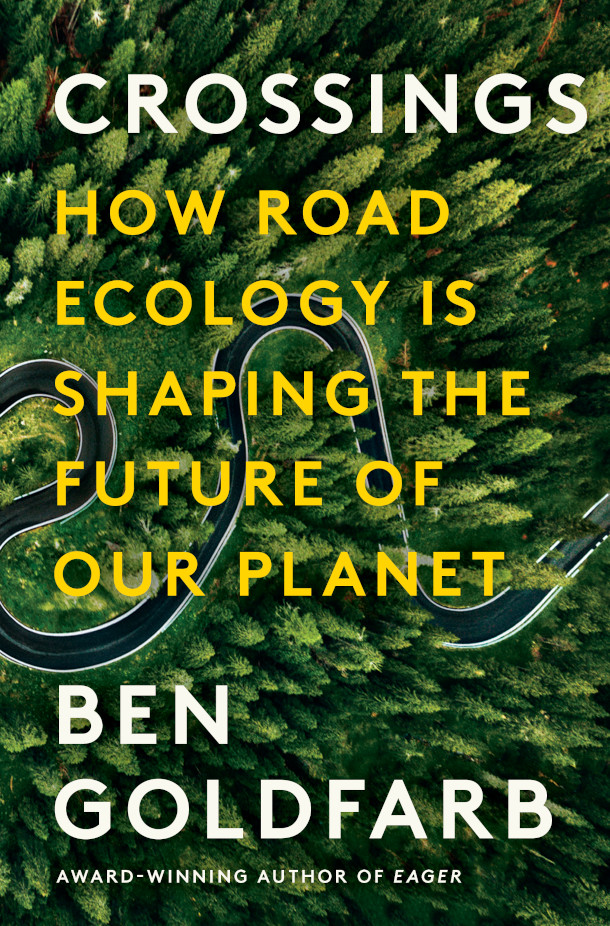
Crossings explores the way that our roads impact wildlife and what we can do about it. (Photo: Courtesy of Ben Goldfarb)
The many millions of miles of roads that crisscross our planet block everything from bears to beetles from safely moving through habitats. But new wildlife crossings like overpasses and underpasses are helping reconnect animals with the landscape. Journalist Ben Goldfarb joins Host Jenni Doering to discuss his book Crossings: How Road Ecology is Shaping the Future of Our Planet.
Transcript
O’NEILL: It’s Living on Earth, I’m Aynsley O’Neill.
DOERING: And I’m Jenni Doering.
The many millions of miles of roads that crisscross our planet allow us humans to get from Point A to Point B. But they make it a lot harder for the other animals we share the Earth with to get around. Fortunately, there’s a whole branch of ecology dedicated to making roads a little friendlier to wild animals, and journalist Ben Goldfarb explores it in his book “Crossings: How Road Ecology is Shaping the Future of Our Planet”. I started by asking Ben to read a passage from his book.
GOLDFARB: Road ecology was an act of inter-species imagination, a field whose radical premise asserted that it was possible to perceive our built world through nonhuman eyes. How does a moose comprehend traffic? What sort of tunnel appeals to a mink? Why do grizzly bears prefer crossing over highways while black bears go under? These questions had empirical answers, but they also required ecologists to think like wild animals—empathy manifested as science.
DOERING: Ben, that kind of thinking seems rare in our hyper anthropocentric world.
GOLDFARB: It does. Yeah, you know, and I think that's especially true when it comes to roads, that roads are these ubiquitous structures. We don't really think about them a whole lot. One of the beautiful things about road ecology is that, in a way, one of the guiding principles is to think about our human built landscapes the way that wild animals might think about them. Those non-human beings perceive our roads and railroad tracks and container ships and so on, so differently than we do. That idea of trying to comprehend our built world through the eyes of non-human beings, it's a really powerful idea. And in a sense, even though I'm not sure road ecologists would explicitly say they're doing that, that's what this field of science is all about.
DOERING: Of course, roads cause all kinds of ecological disruptions, but the most obvious and really tragic is roadkill itself. Just how big of a problem is roadkill in the United States?
GOLDFARB: It's almost unfathomably vast as an issue. We don't really know exactly how many animals are killed every day by cars, but the best guess is that more than a million vertebrate animals, so to say nothing of insects and arachnids are killed by cars every day. I think we have this way of saying, "well, look, lots of common animals like gray squirrels and raccoons and white-tailed deer are being hit by cars, but there are a lot of squirrels and raccoons out there. So yes, it's sad for those individual animals, but it's not really a conservation crisis," because logically enough, the animals that we see dead on the highway are the common animals. But there are lots of threatened and endangered species too, like Florida panthers and ocelots and tiger salamanders, for which roadkill is the leading source of mortality. There are many, many species in the US and around the world that we're literally driving to extinction.
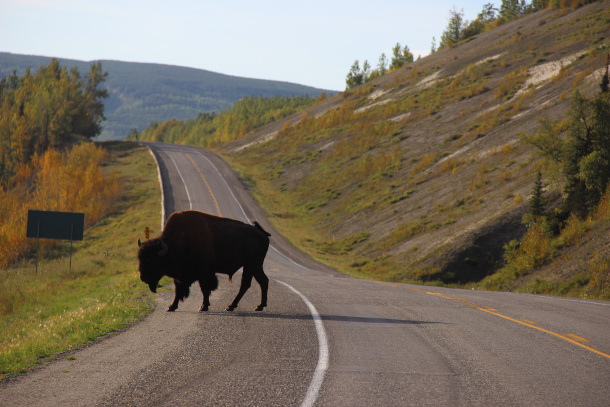
Although we typically see common animals as roadkill, endangered species are also at risk of getting hit by cars. (Photo: Courtesy of Ben Goldfarb)
DOERING: So, Ben, different animals respond differently to the presence of traffic. How might a bear's response compared to a deer or even a frog?
GOLDFARB: Yeah. So, it's a great question, and a few years ago, a group of road ecologists, led by a scientist named Sandra Jacobson, classified animals responses to roads because every animal experiences roads differently and reacts differently to them. So, on one end of this spectrum of road response, you have animals that have been called non responders, animals that don't really notice or react to traffic. There, we're talking largely about reptiles and amphibians. You can imagine a bunch of frogs on a warm, wet spring night hopping down to their breeding pond to mate, and they're just going for it. Any road that's in their way; they're going to cross it. They don't necessarily know that traffic means trouble, and they get crushed in enormous numbers. They're these, you know, mass squishing events, where hundreds or even 1000s of frogs and salamanders can be killed on a single night because they're not responding to the presence of traffic. So, there you've got the non-responders, the animals are just crossing the road come, you know, hell or high water. And then on the other end of the spectrum, we've got road avoiders, really cautious, wary animals, and grizzly bears are kind of the iconic example of that. These are really intelligent animals who rightfully know that roads are dangerous and that humans use roads and humans are dangerous, and even a handful of cars per hour can be enough to prevent grizzly bear from crossing a relatively rural road, and so they don't get hit by cars as much. But you know, I think for bears, you know, almost a bigger problem than roadkill is habitat fragmentation, because they're not crossing these roads at all. They're unable to find mates, find all the food they need. We know that road density is one of the biggest factors in making habitat unsuitable for grizzly bears. So, whether you're crossing the road too often, in the case of amphibians, or not crossing at all, in the case of many grizzly bears, roads spell trouble.
DOERING: And then there are animals in the middle, like deer, that will approach the road cautiously, and then when they think it's safe to go, they'll go across. But of course, we see a lot of deer collisions in the US, and that can be a huge problem, not just for the deer, the very tragic outcome of that for them, but also for us humans.
GOLDFARB: Absolutely. Yeah. So, deer, scientists have called speeders, which means that they're looking for these little gaps in traffic that they can run through. And of course, they don't always gage those gaps perfectly. And obviously, deer collisions are the result of that. There's something like a deer collision every 30 seconds in the US. Large animal collisions collectively cost society more than $8 billion in hospital bills and vehicle repairs and insurance costs and so on. And hundreds of drivers die every year, and deer crashes and other large animal crashes, the white tail deer is the single most dangerous wild animal in North America. That's not the deer's fault; that's the car's fault.
DOERING: Wow. Forget about bears or wolves or cougars. It's the deer you need to watch out for.
GOLDFARB: Exactly, in fact, there have been studies suggesting that return of wolves and cougars could ultimately be a really good thing for human safety because they would thin some of those overpopulated deer herds and prevent a lot of dangerous crashes.
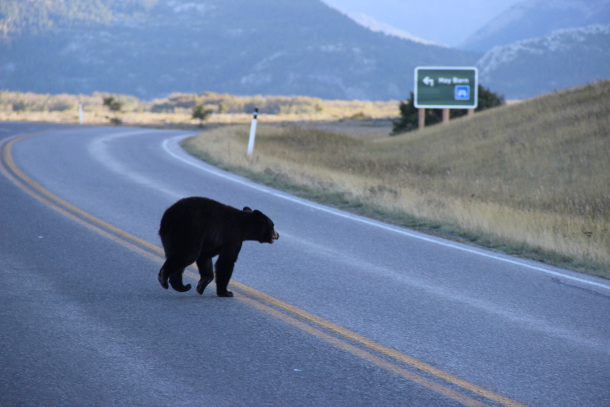
Black bears generally prefer to use underpasses that are built under highways than use overpasses, which function more like bridges. (Photo: Courtesy of Ben Goldfarb)
DOERING: So, if you go on a road trip these days, you might go underneath one of these amazing structures called an overpass, or you might, you know, not even realize you're driving right over a lot of underpasses. What goes into thinking about what makes for an effective wildlife crossing when it is an overpass or an underpass?
GOLDFARB: Yeah, really good question. So, you know, I think the most important thing to start thinking about is, okay, what animals are you trying to help? Because there are some animals, like deer, that will very happily go through an underpass. But then there are other species that really prefer overpasses, going over what it looks like to us, like a pedestrian bridge, basically over a highway. A really good example of that are pronghorn, which are commonly known as antelope. And pronghorn are the prototypical overpass users. They're incredibly fast, right? They're the fastest land animal in North America. They've got amazing vision. They can see a really long distance. So, they don't want to be crawling through a little culvert. They want to be up on the deck of a bridge where they can look out for predators and run away if they have to. So, if you're going to build a wildlife crossing for pronghorn, you know, you really want an overpass, right? So that's just, you know, one example of how you really have to think about the animals you're trying to help and, of course, figuring out where the animals would want to cross the highway if they could right? And so, we're looking, typically, at road collision data. You know, if there's a big pile of carcasses, that's probably a pretty good indication that there's a migration route crossing the highway, and putting those satellite collars on animals, tracking wildlife to figure out where they're approaching highways and might want to cross if there is an opportunity to cross, that's another really helpful data layer. So, it's that combination of things. What animals are you trying to help? Where are the animals approaching the highway? All of those different factors are going into, you know, where these wildlife crossings are sited.
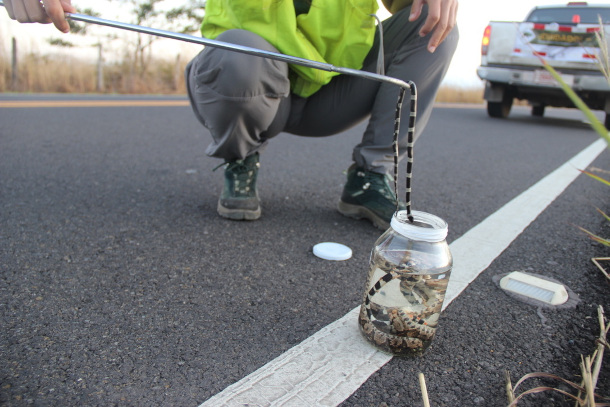
Though mammals are the most visible form of roadkill, cars also decimate populations of various reptiles and amphibians. (Photo: Courtesy of Ben Goldfarb)
DOERING: Now, talk to me about migration, and how species that migrate often come into some of these road conflicts, more so than species that stay in one place.
GOLDFARB: Absolutely. So, you know, what is the point of migration? Right? The idea of migrating, if you're an organism, is to sync your movements with the resources that the world provides you. So, one chapter of this book, for example, is about mule deer in southwestern Wyoming. These deer are migrating between seasonal habitats. In winter, they're down in these low elevation valleys where there's not a whole lot of snow and the weather's a little bit gentler. And then in summer, they're following this green wave of new vegetation up into the mountains to spend the summer browsing up in the cool High Country. So, if you're a mule deer, you're following those seasonal resources is integral to your survival. The problem is that there's no spot in the lower 48 states that's farther than 20 miles from a road. So, if you're going to migrate, roads are going to get in the way. And in the case of those mule deer, their winter range is basically bisected by I80, this giant interstate highway. And during really harsh years, you know, they'll basically pool up against the North side of I80 looking for a way to cross to find that good winter food that they need to survive. Some especially harsh years, 40% of that deer herd will actually starve because they can't complete their migration to reach all of that really good winter range on the south side of I80. So, that's, I think, a really powerful example of how migration historically, this brilliant strategy, has become increasingly dangerous or problematic because of roads. And those migratory species, which were historically some of the most successful animals on earth, are today really endangered in many cases.
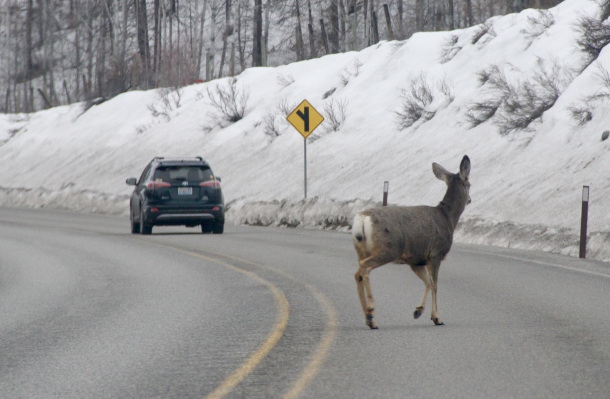
Deer are considered the most dangerous vertebrate in the United States because of the number of people who die in deer-car collisions per year. (Photo: Courtesy of Ben Goldfarb)
DOERING: So, Ben, you put in a wildlife crossing, an overpass or an underpass, the animals need to know that they're supposed to use it. So how do you direct them towards this overpass or underpass?
GOLDFARB: Yeah, so the really critical infrastructure that gets the animals to the crossings are roadside fences. You're fencing off the highway on either side of the crossings and basically guiding the animals to the crossings. And what happens over time, in many cases, that animals just incorporate those crossings in their movements, and they acclimate to them. And you know, a herd of deer will learn to include the crossing in their migration route, or a grizzly bear will teach her cub how to use crossings, and then her cub will become a crosser. But it really all starts with fences that are just keeping the animals off of the highway and getting them to those crossings. So, in a sense, those two pieces of infrastructure, the fences and the crossings, don't really work without the other, right? If all you did was fence the highway, then you'd prevent roadkill, but you wouldn't let animals migrate and meet each other, and if you put up crossings, but no fences, then the animals wouldn't necessarily know to use them.
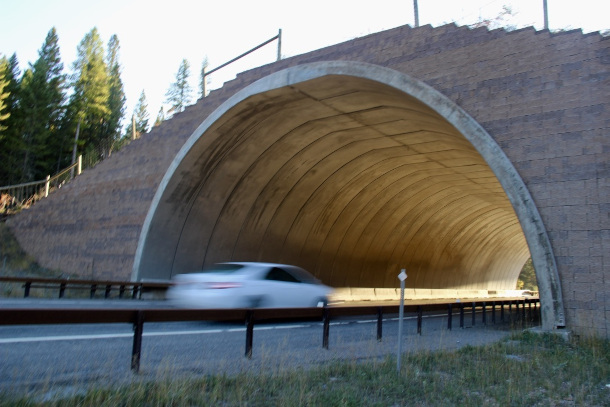
Overpasses are the most visible form of wildlife crossing, allowing animals to walk over the highway. (Photo: Courtesy of Ben Goldfarb)
DOERING: You visited a number of these wildlife crossings, overpasses, underpasses, in the course of writing this book, what's the one that stuck with you the most?
GOLDFARB: Well, it's funny. I mean, the one that I think about a lot, perhaps because it's the, you know, one of the most famous wildlife crossings out there is one that doesn't totally exist yet, or at least one that's not completed yet, and that's the Liberty Canyon crossing just outside of Los Angeles that's being built for mountain lions. And the situation there is, there's this little population of mountain lions trapped in the Santa Monica Mountains, surrounded by this ocean of freeways totally cut off from the rest of mountain lion society elsewhere in California. And so, there's a wildlife crossing being built over the 101, the busiest freeway on Earth, that would allow those mountain lions to mingle with cats elsewhere in the state, and refresh that gene pool and keep that little population alive. And that's an incredible project, I think, because there, it's they're just doing so much to essentially create a new ecosystem atop the highway. The thing about the 101, is that, because it's so densely traffic, so much noise and light pollution, that the designers of that crossing are really pulling out all the stops to create an enticing environment. If you're building a wildlife crossing over a little two-lane highway in Wyoming, you don't necessarily have to take all of these measures, but with such a busy freeway in Los Angeles, you really have to do a lot to make it appealing, and so they're adding all of these vegetated screens and berms and rock walls to block some of that sensory pollution. They're growing plants at an on-site nursery to create this vegetation community atop the wildlife crossing. So, they're really just again, creating this new chunk of land atop the highway that will resemble the surrounding ecosystem. And to me, that's just such a beautiful idea creating a new ecosystem over a highway. That just blows my mind.
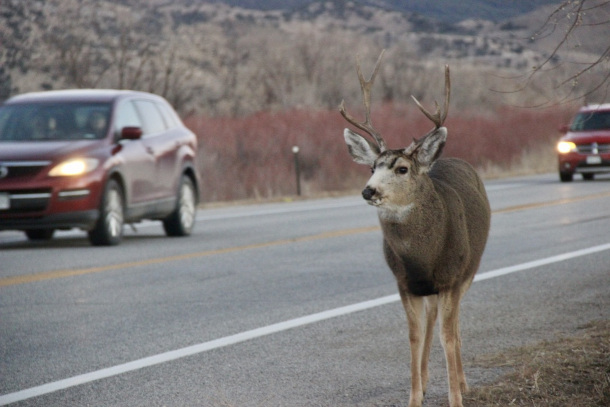
Animals that avoid crossing roads may not get hit by cars, but they sometimes die because they can’t migrate to areas with more food or fail to reproduce if they are unable to cross the road to find a mate. (Photo: Courtesy of Ben Goldfarb)
DOERING: And this crossing Liberty Canyon started in part because the public fell in love with a very famous kitty, a mountain lion named P-22. Can you tell us his story?
GOLDFARB: Right, so, P-22 is the poster cat for this whole project. And so, P-22 was born in the Santa Monica Mountains, this little patch of habitat isolated by freeways. And he was, you know, one of the only cats that managed to get out of there. He managed to cross the 101 and the 405 these two incredibly busy freeways. Somehow, nobody's quite sure how he did it. And he ended up in Griffith Park, which is this, you know, tiny little island of wildness, really, in Los Angeles proper. You know, that's where the LA Zoo is, and the Hollywood sign. And P-22 lived there successfully for many years. He never bothered people. He hunted deer and raccoons at night. He was this wonderful neighbor.
DOERING: Didn't he break into the zoo at times though?
GOLDFARB: He did, he did kill a koala in the zoo. I think that's actually kind of incredible. I think in many places, they would have said, Oh, we can't have this wild, big cat menacing our precious zoo animals. But, you know, instead, to Los Angeles' credit, they said, well, we'll just sort of fortify the zoo itself, and we'll let P-22 do his thing. And so, he really captured people's imagination. But it was also sad story as well because he was isolated in this little park and was doomed never to find a mate. It was very unlikely that any female mountain lion would ever repeat that journey and end up in Griffith Park. So, he was doomed to be this lonely bachelor for the rest of his life. And so, I think that idea of this cat who is looking for love but trapped on this little island of habitat surrounded by an ocean of freeways, I think that captured people's imaginations and activated that ecological empathy we were talking about earlier. And thanks to the campaigning and fundraising efforts of a woman named Beth Pratt with the National Wildlife Federation and many other people as well, this wildlife crossing is being built now. And unfortunately, P22 died a couple of years ago. He was actually hit by a car and injured had to be euthanized. But this wildlife crossing is going to help his literal flesh and blood family members who still live in in the Santa Monica Mountains. So, it's, you know, I think, a pretty incredible example of how a charismatic animal can really galvanize public support.
DOERING: And by the way, how much is this wildlife crossing going to cost in the end, and when will it be ready?
GOLDFARB: Yeah, it's gonna end up being over $90 million in part, again, because, you know, it is the largest one ever being built, and they're really are pulling out all the stops. That's a pretty atypical price tag for wildlife crossings, typically with an overpass, we're talking more like eight to ten million dollars, so definitely don't want people to see the $90 million price tag and say, "Oh well, they all cost that," because the Liberty Canyon crossing really is exceptional, very unusual, and last I heard, it'll be complete in early 2026.
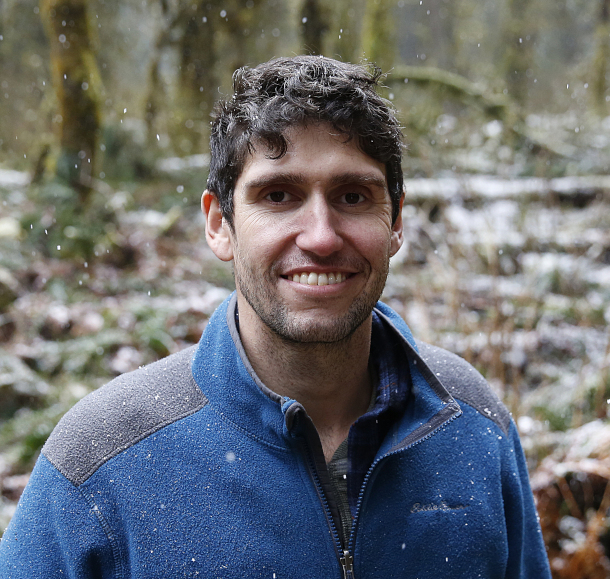
Ben Goldfarb is the author of Crossings: How Road Ecology is Shaping the Future of Our Planet. (Photo: Terray Sylvester)
DOERING: Now, of course, most of your book focuses on what's happening here in the US, but you also do travel to other countries. What have you seen in terms of who's at the forefront of this field of road ecology and making sure that the environment more safely interacts with our roads?
GOLDFARB: You know, it's interesting here in the US, we have this very calcified highway system, right? We built our highways in the 1960s and 70s, at least, you know, our big interstates before we fully recognized what a gigantic problem we were creating for wildlife. So, most of the work that we're doing here in the US is basically retrofitting right, adding wildlife crossings here and there, whereas other countries, especially developing countries, that are building out their highway infrastructure now, you know, they can do it right from the get go. India is a really good example of that. And in some places, India has built highways up on these concrete pillars, so the whole highway is elevated above the forest floor, and tigers and elephants and other animals can wander back and forth unimpeded. So, the great challenge is that a lot of these countries that are building their highways now aren't necessarily doing that. We're in the middle of this period that the ecologist Bill Lawrence has called the infrastructure tsunami, — you know, this wave of new construction that's sweeping across the planet, especially in places like India and Nepal and Brazil, some of the most biodiverse countries on earth. And just the sheer number of highways that are being built right now, I think, really threatens to overwhelm nature. So, we're at this critical point in the history of infrastructure where we're building more of it now than ever. It's really the primary threat to so many different species, especially in the tropics, and we really need to get it right, because obviously some amount of highway building is unavoidable and even desirable, but how can we do that in a way that doesn't totally sacrifice nature? I think that's one of the next great challenges in human history.
DOERING: Ben Goldfarb is an environmental journalist and the author of Crossings: How Road Ecology is Shaping the Future of Our Planet. Thank you so much, Ben.
GOLDFARB: Thanks, Jenni, it's great to be here.
Links
Living on Earth wants to hear from you!
Living on Earth
62 Calef Highway, Suite 212
Lee, NH 03861
Telephone: 617-287-4121
E-mail: comments@loe.org
Newsletter [Click here]
Donate to Living on Earth!
Living on Earth is an independent media program and relies entirely on contributions from listeners and institutions supporting public service. Please donate now to preserve an independent environmental voice.
NewsletterLiving on Earth offers a weekly delivery of the show's rundown to your mailbox. Sign up for our newsletter today!
 Sailors For The Sea: Be the change you want to sea.
Sailors For The Sea: Be the change you want to sea.
 The Grantham Foundation for the Protection of the Environment: Committed to protecting and improving the health of the global environment.
The Grantham Foundation for the Protection of the Environment: Committed to protecting and improving the health of the global environment.
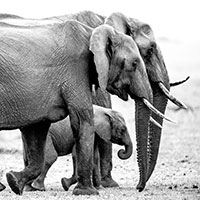 Contribute to Living on Earth and receive, as our gift to you, an archival print of one of Mark Seth Lender's extraordinary wildlife photographs. Follow the link to see Mark's current collection of photographs.
Contribute to Living on Earth and receive, as our gift to you, an archival print of one of Mark Seth Lender's extraordinary wildlife photographs. Follow the link to see Mark's current collection of photographs.
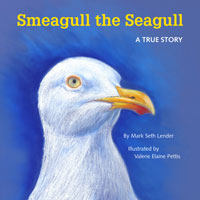 Buy a signed copy of Mark Seth Lender's book Smeagull the Seagull & support Living on Earth
Buy a signed copy of Mark Seth Lender's book Smeagull the Seagull & support Living on Earth

